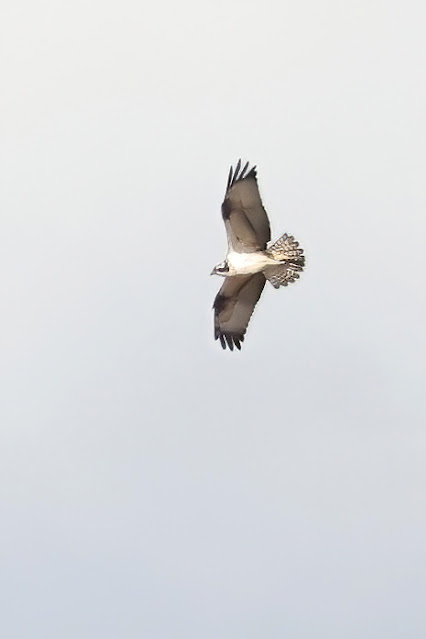23rd September 2023
According to Birdguides a Pallid Harrier was reported at Blue House Farm on Friday 15th September (record published on the 17th September), but no idea whether this report was ever confirmed. However on the 17th September Karl Price found and photographed a juvenile Pallid Harrier at Wallasea Island and is still present on the 24th September. The bird was known to be very mobile and far-ranging covering the whole of Foulness and Wallasea Island so I wasn't too confident of getting a shot as I set off.
When I arrived at the car park I walked up the path to the sea wall to get a panoramic view across the site. This produced the first surprise of the day when I saw two Wall Brown butterflies fluttering in front of me. Wall Browns have been extinct in my home county of Hertfordshire since 2005 and are normally only found in a few coastal sites in Essex, so quite a find.
Very few passerines around but did find something on the magic fence surrounding the sluice. Magic because on two occasions I have managed to photograph Twite on here (see below), but this time it was a Wheatear.

There were also a few Yellow Wagtails around, but mainly calls and difficult to locate. However, this juvenile was a little more cooperative.
A few Marsh Harriers around and this juvenile put on a good display.
A Peregrine Falcon flew through carrying prey. It was extremely distant but by cropping very heavily it was possible to see that it was plucking its prey in flight and you can even see the feathers flying off.
The Osprey that has been seen over the River Roach quite frequently was today fishing over the River Crouch, but again very distant
I positioned myself about 400 yards east of the track to Caroline's Hide and after about half an hour the juvenile Pallid Harrier came into view. It was reasonably close but horribly back-lit which made photography quite tricky and these are the best I could get.
But the biggest surprise of all was when standing on the sea wall east of Tillets Marsh, I saw a large brown bird drop down on to the marsh and asssumed it was a Marsh Harrier. However, it was quite rakish so more likely to be a Cormorant and it was only when I got the bins on it I could see it was in fact a juvenile Gannet. It flew low across the marsh and then rose steeply over the sea wall and returned to the River Crouch. Apparently only the second record for Wallasea Island!!!






















No comments:
Post a Comment
Note: only a member of this blog may post a comment.